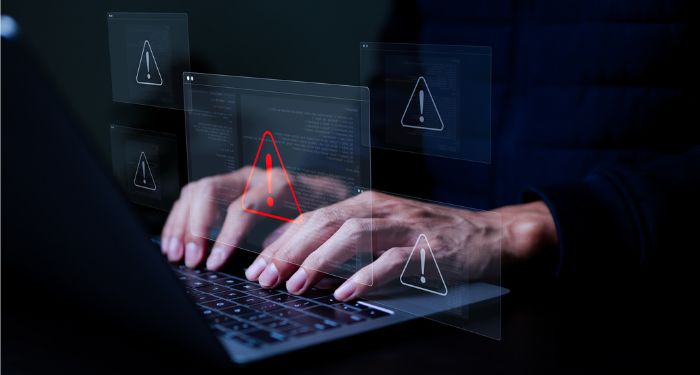Cybersecurity 101
 Over the past year, COVID-19 has provided many challenges and unexpected changes for businesses across the industry spectrum. Practically overnight, businesses were forced to adapt to a fully remote or partially remote workforce. With a heavy reliance on IT, it is important to have an understanding of Cybersecurity to assist in identifying potential threats to a company’s system.
Over the past year, COVID-19 has provided many challenges and unexpected changes for businesses across the industry spectrum. Practically overnight, businesses were forced to adapt to a fully remote or partially remote workforce. With a heavy reliance on IT, it is important to have an understanding of Cybersecurity to assist in identifying potential threats to a company’s system.
Cybersecurity Defined
Cybersecurity is defined as “the measures taken to protect a computer or computer system against unauthorized access or attack.” (Merriam-Webster). A more detailed definition of Cybersecurity from the National Initiative for Cybersecurity Careers and Studies (NICCS) is “a strategy, policy and standards regarding the security and operations in cyberspace, and encompassing the full range of threat reduction, vulnerability reduction, deterrence, international engagement, incident response, resiliency, and recovery policies and activities including computer network operations, information assurance, law enforcement, diplomacy, military and intelligence missions as they relate to the security and stability of the global information and communications infrastructure.” (NICCS).
Cybersecurity measures can range from company policies to physical/logistical access and monitoring of the computer or computer system itself. In the Cybersecurity arena, three key focus areas are encompassed within the CIA triad: Confidentiality, Integrity and Availability. The methods applied within a Cybersecurity approach should address each of these focus areas.
Cybersecurity Risk, Planning, and Implementation
Identifying an acceptable level of risk, setting a plan of action, and implementing the plan are the most important aspects of Cybersecurity. As part of the planning phase, Cybersecurity risks should be identified, evaluated and addressed within a risk management plan to mitigate the level of risk. Implementing a risk management plan can help identify higher risk areas that may need additional security or monitoring. Asking questions, such as the following, can help identify risks and threats within the business framework:
- What type of critical information could be lost as a result of a cyber-attack and how could I keep my business running if an attack were to occur?
- What measures do I currently have in place to deter a would-be attacker?
- Are my employees properly trained to act in the event of a cyber-attack?
Once the acceptable level of risk and a security plan is determined, a company can begin to implement policies, hardware, or software to address the risks. Implementing barriers, such as firewalls and IPS, can help guard against a would-be attacker. Requiring dual-factor authentication can aid in ensuring users that access the network or system are approved individuals. Policies, such as incident response, can equip users on how to handle a potential Cybersecurity event.
Cybersecurity Maturity Model (CMMC)
The information in the article below has been superseded by CMMC 2.0 in mid-November 2021.
Recently, the Department of Defense (DOD) designed a new form of certification geared towards the Defense Industrial Base (DIB) sector regarding their ability to protect sensitive and classified information. Termed the Cybersecurity Maturity Model Certification (CMMC), this new certification includes a combination of existing standards NIST SP 800-171, NIST SP 800-53 and AIA NAS9933 and will be required for new and expiring DOD contracts in the coming years. Within the CMMC, several domains and levels have been established based on different levels of certification. Companies can obtain different levels of certification ranging from basic cyber hygiene practices (Level 1) to having advanced or progressive practices (Level 5). Although these CMMC certification requirements are not expected to be implemented for the next year or two, proper planning and evaluation of a company’s current system today can lead to better preparedness when they are eventually rolled out.
The topic of Cybersecurity is broad and involves several different aspects ranging from planning to implementation. Recent events have shown us that no business is exempt from a breach which can range from ransomware attacks to phishing attempts. As businesses continue to adjust to a post-COVID world, it is essential to keep Cybersecurity at the forefront.
McKonly & Asbury can assist your company in managing Cybersecurity threats by performing a SOC for Cybersecurity engagement to identify whether effective processes and controls are in place as well as provide you with recommendations to detect, respond to, and mitigate and recover from breaches and other cybersecurity events. McKonly & Asbury also has the tools and resources to assist any organization in adopting the requirements needed to become CMMC compliant. Please reach out to either David Hammarberg at dhammarberg@macpas.com or Mike Hoffner at mhoffner@macpas.com. We can answer any questions and help you determine if a SOC for Cybersecurity report or CMMC certification would be beneficial for your company.
About the Author

Chris joined McKonly & Asbury in 2019 and is currently a Supervisor with the firm. He is a member of the firm’s Audit & Assurance Segment, serving the manufacturing industry and SOC practice



